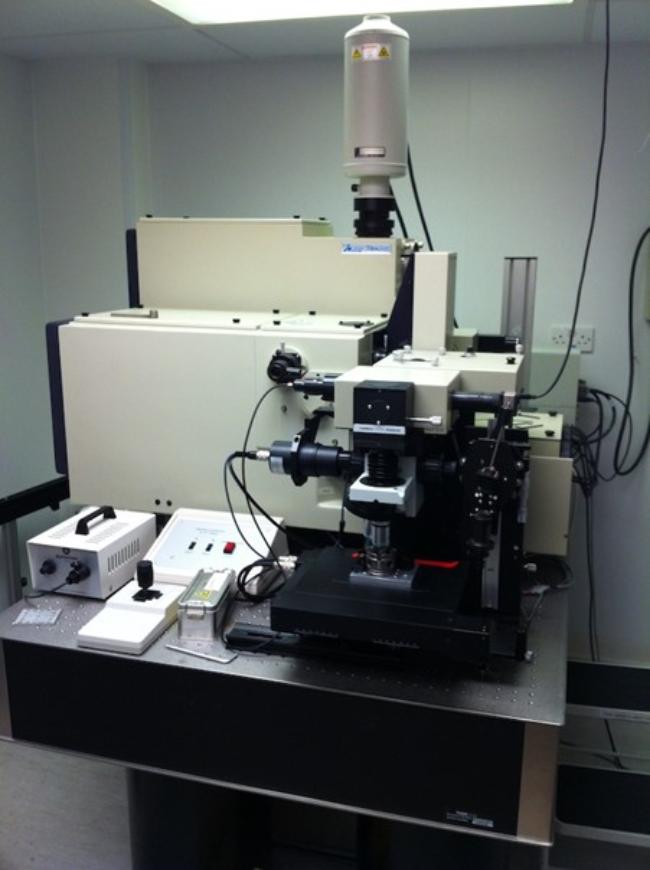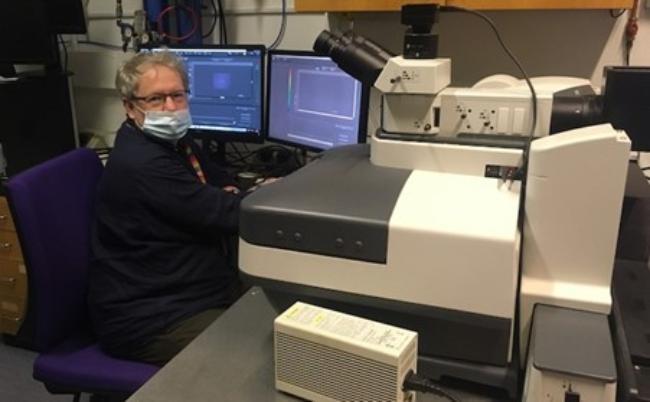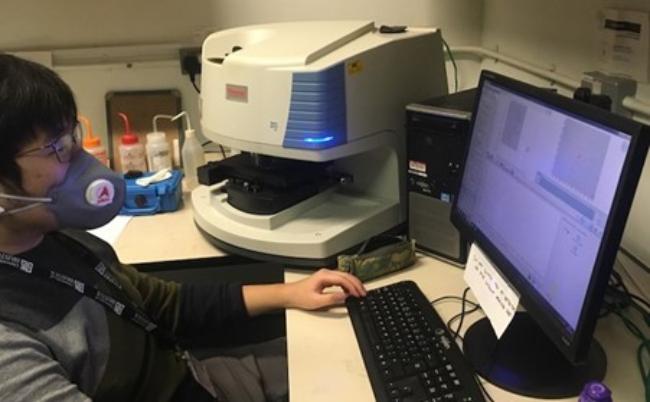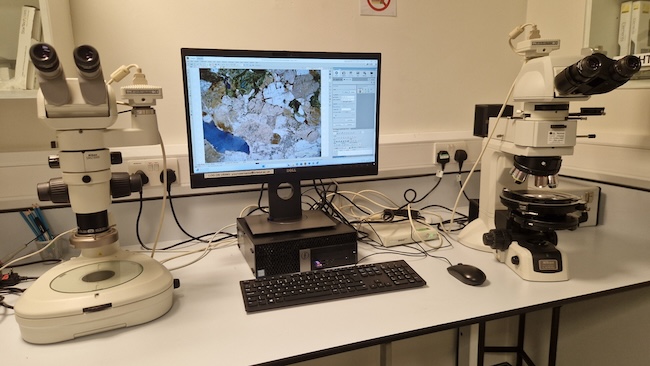Analytical Facilities
The Petrology group has its own facilities for the analysis of experimental run products including Fourier-Transform Infrared Spectroscopy and Raman Spectroscopy.
Raman Spectroscopy
The Petrology Group laboratories house two Raman spectrometers for the identification of minerals and compounds dissolved in fluids and quenched melt (glass). The first, A Jobin-Yvon HORIBA™ T64000 triple spectrometer is optimised for high spectral resolution and can be configured to access Raman modes less than 10cm-1 from the laser line. The second is a ThermoFisher Scientific DXR™3xi Raman Imaging Microscope that is optimised for the rapid acquisition of high spatial resolution Raman maps across large sample areas. This device also has a modular design that allows the laser source to be swapped rapidly with 455nm, 532nm, 633nm and 780nm sources available.

Jobin-Yvon HORIBA™ T64000 triple Raman spectrometer

ThermoFisher Scientific DXR™3xi Raman spectrometer
FTIR Spectroscopy
Our spectroscopy suite also includes a ThermoFisher Scientific Nicolet™ iN™ 10 Fourier-Transform Infrared Spectrometer. This instrument has both room temperature and liquid nitrogen cooled detectors and is capable of mapping samples down to a resolution of a few microns and is sufficiently sensitive to quantify the water content of nominally anhydrous minerals.

ThermoFisher Scientific Nicolet™ iN™ 10 FTIR spectrometer
Optical Microscopy Laboratory
The Petrology Group also manages a dedicated lab for optical microscopy which contains a Nikon LV100N polarised transmitted and reflected light microscope, with an optional mechanised point-counting stage, as well as Nikon SMZ1000 and SMZ1270i stereomicroscopes. All three microscopes have attached CCD cameras for the acquisition of petrographic images of thin sections and other samples via the Nikon Elements software package on the dedicated PC.

Nikon LV100N polarised transmitted and reflected light microscope
School of Earth Science Microbeam suite
As well as our own analytical facilities, the Petrology Group has access to the School’s World-class electron microbeam suite, which includes an SEM, a JEOL JXA8530F Hyperprobe Electron-Probe Microanalyser (EPMA) with a Field Emission Gun source for high spatial resolution chemical mapping and an older Cameca SX100 EPMA. Both instruments are equipped with 5 wavelength dispersive spectrometers and 1 energy dispersive spectrometer.
School of Chemistry X-ray Analytical Service
The School of Chemistry, a short walk from the Petrology Group labs, houses the Structural Chemistry Laboratory which offers an X-ray Analytical Service to members of the University for a small fee. The lab houses multiple diffractometers for both single crystal and powder diffraction work, many of them with robotic sample exchange systems for rapid analysis of multiple samples.
